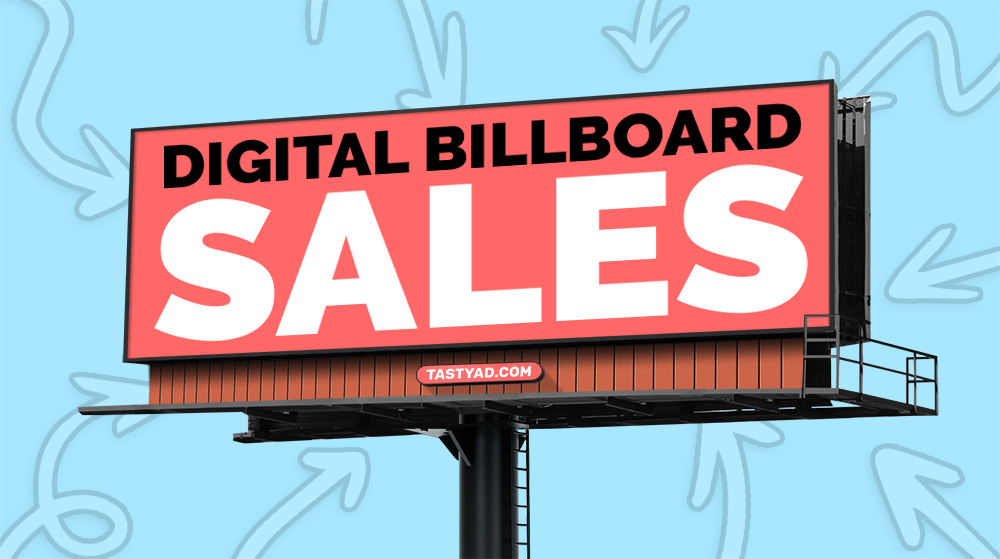6 Different Ways to Sell Your Digital Billboard Space

Every billboard and out-of-home advertising company relies heavily on sales to maintain and grow its business. In the competitive landscape of digital advertising, it’s essential to explore various strategies for selling your digital billboard space effectively. Here are six diverse approaches that can help you optimize your sales efforts:
1. Direct Sales
One of the most traditional yet effective methods is direct sales. This approach involves reaching out directly to local, regional, and even national advertisers interested in utilizing your digital billboard space. By providing potential clients with comprehensive details about your billboard’s location, audience demographics, and pricing options, you can create a compelling case for why they should choose your space over competitors. This method not only allows for direct negotiation of deals but also gives you greater control over the entire sales process, enabling you to tailor your pitch to meet the specific needs of each advertiser.
2. Programmatic Advertising
In today’s fast-paced digital landscape, programmatic advertising has emerged as a game-changer. This method utilizes automated systems and real-time bidding to facilitate the sale of ad space. By connecting your digital billboard inventory to an ad exchange or demand-side platform (DSP), advertisers can bid on available impressions seamlessly. The efficiency and scalability of programmatic advertising make it an attractive option for many businesses, as the entire buying process is automated. This means less manual intervention and more time to focus on strategic planning.
3. Out-of-Home (OOH/DOOH) Agencies
Another effective strategy is to partner with national billboard agencies that specialize in out-of-home advertising. By listing your inventory with these agencies, you can leverage their extensive networks to reach a broader audience. Once your digital billboard space is incorporated into their system, they can send you requests for proposals (RFPs) that may lead to larger brands advertising on your billboards. While this method may result in slightly delayed payments due to the involvement of multiple parties, it can ultimately yield significant returns as you tap into the agency’s established client relationships.
4. Joint Ventures or Partnerships
Consider forming strategic partnerships with advertising agencies, media companies, or online advertising platforms to enhance your sales capabilities. Collaborating with these entities can provide you with access to their existing client bases and industry expertise. For instance, there’s a noteworthy example of a small billboard company in Wisconsin that partnered with a regional online news organization. This partnership allowed the news organization to package billboard advertising with their online space, creating a win-win situation for both parties. Such collaborations can significantly expand your reach and effectiveness in selling your digital billboard space.
5. Ad Networks or Brokers
Engaging with ad networks or brokers that specialize in digital out-of-home advertising can also be a fruitful strategy. These intermediaries possess established relationships with advertisers and media buyers, making them invaluable allies in connecting your digital billboard space with relevant advertising campaigns. They manage the sales process on your behalf, taking a commission or fee for their services. By leveraging their expertise and networks, you can streamline your sales efforts and focus more on other aspects of your business. For example, IBO has a network called IBO Speedway that does just this.
6. Sell Your Available Space to the Public
Lastly, consider platforms like Billboard4Me that allow you to list your digital billboard inventory for public purchase. This approach enables individuals to buy space for personal messages, such as birthday greetings, anniversary celebrations, or congratulatory announcements. Not only does this method create an additional revenue stream, but it also does not interfere with your existing local advertisers, as the messages are personal and non-competitive. Similar to programmatic advertising, this approach requires minimal effort on your part, allowing for passive income generation.
Conclusion
Ultimately, the most effective sales method will depend on various factors, including your capabilities, the size and skill of your sales staff, the competitive landscape, your geographic location, and your preferred level of involvement in the sales process. To maximize the revenue potential of your digital billboards, it can be beneficial to employ a combination of these strategies. Experimenting with different methods and adapting your approach based on market feedback can lead to greater success in the dynamic world of digital advertising. Happy selling!


